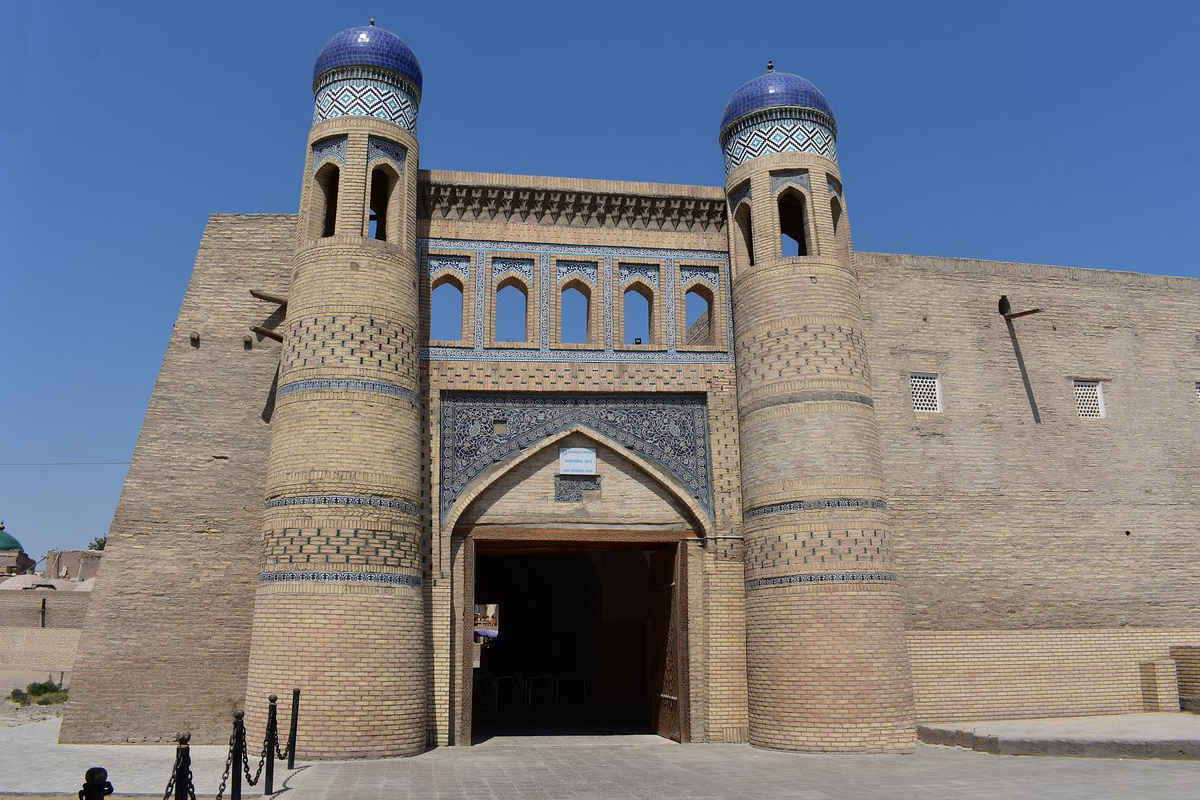Khiva - Polvon Darvoza gate
The eastern gate of downtown Ichan Kala in Khiva is called Polvon-Darvoza (named after the famous wrestler and poet, Polvon or Pahlovon Mahmud) or Slave Gate (there used to be a large slave market to its right).
The people of Khiva also called Polvon-Darvoza the Gate of Execution (the khan’s decrees and executions on runaway slaves and rebels were carried out near the gate). Just behind the façade of the monumental gate is a gallery covered with six domes.

The eastern gate of Ichan-Kala differs significantly from other gates of Khiva in the size of its architectural form. It is no coincidence that people called this gate “Polvon-Darvoza”. The eastern gate of Ichan-Kala was also used to house the trading stalls. The gate looks like a “dash kutcha” (stone corridor) extending from west to east, the facades are decorated in the form of arched portals, the driveway is blocked by a chain of six domes and there are shops in the side arches, two each.
Above the gateway, a marble slab with a historical inscription has been preserved, indicating the year of construction in words and the city of Khiva (Shahri Kheyvak – 1221 (1806 AD)). This is undoubtedly the year of construction of the original gate, which is on the line of the fortress wall.
After the completion of the monumental Allakulikhan Madrasah in 1835, a six-domed roofed gallery – the Market Passage – was added to the south of it, bringing forward the beginning of the Polvon-Darvoza Gate.
At the entrance, from Ichan Kala, there is an inscription “Shahri Khiva” (City of Khiva), the letters arranged to read the date of construction – 1221, i.e. 1806 A.D. This is the oldest part of the building associated with the Anush Khan bath.
The construction of the gate was completed by Allakuli-Khan in 1835. On the right side of the gate at the exit of Ichan-Kala, there was a slave bazaar until 1873 and in the niches of the gate, runaway slaves and rebels awaited their punishment.
The present gate dates from the late 1830s of the 19th century. In the Polvon-Darvoza zone under Allakulikhan, the most important urban transformations were carried out: the Madrasah with 99 hujshras, the caravanserai and the Tim were built, and the construction of the Tashkhauli Palace with its intricate layout and multi-door composition was completed.
It was also here that the khan’s decrees were promulgated and the punishment of criminals was carried out. Hence the popular names of these gates: Pashshab-Darvoza (the gate of execution), Qul-Darvoza (the gate of slaves).
The planned size is 51.76 m x 17.5 m; large domes are 5.2 m in diameter; two small domes are 4.5 m; benches are 2.8 m x 4.4 m. With the transfer of the khan’s residence to Tash-Khauli, the square turned into a public centre of Khiva, the khan’s decrees were displayed at the city gates and executions were carried out next to it.
